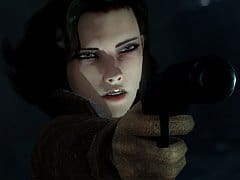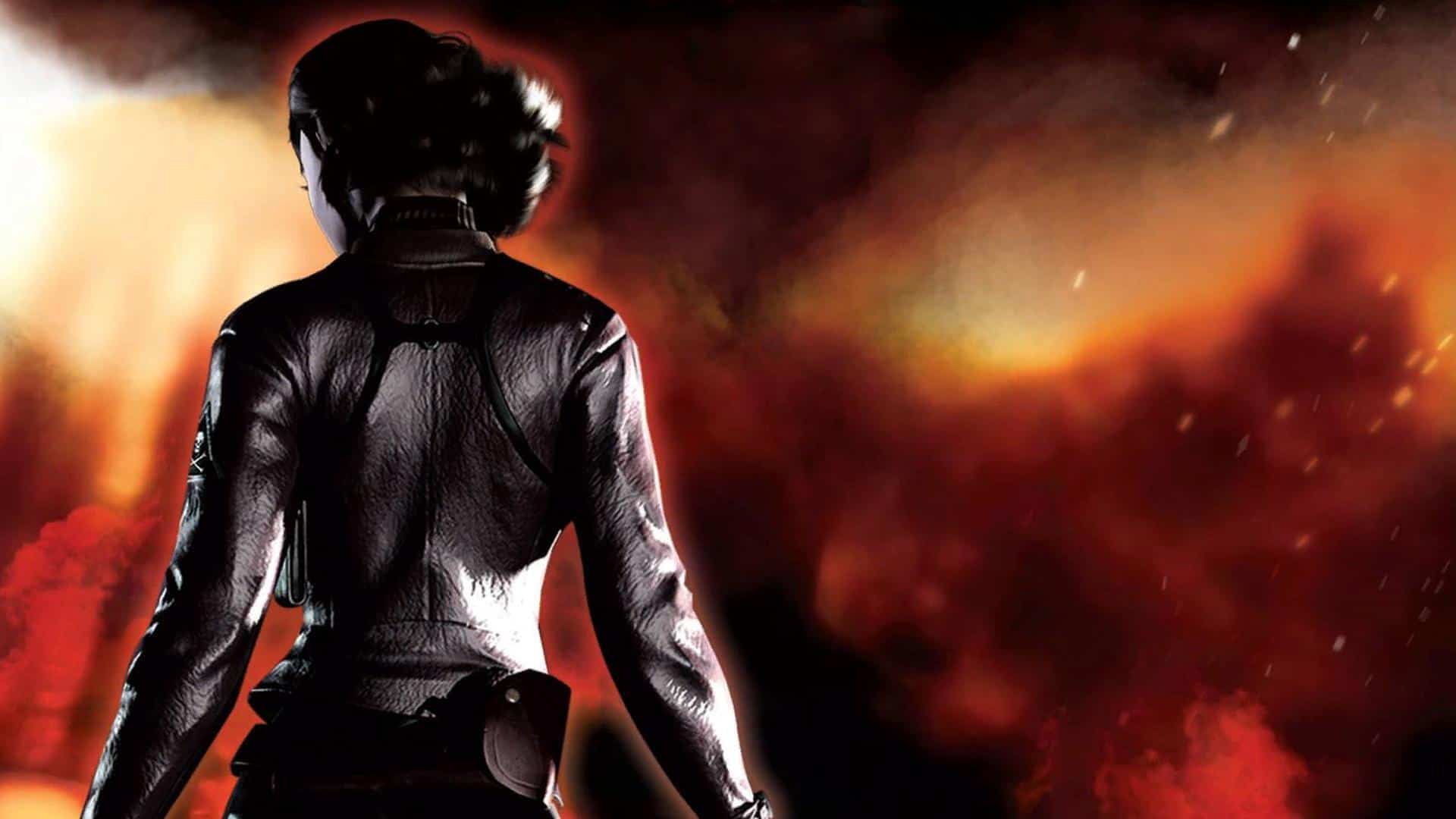You can trust VideoGamer. Our team of gaming experts spend hours testing and reviewing the latest games, to ensure you're reading the most comprehensive guide possible. Rest assured, all imagery and advice is unique and original. Check out how we test and review games here
It’s strange, isn’t it? World War II games are two a penny, stealth games are still relatively frequent – but combine the two and suddenly you have something that feels out of the ordinary. That was my initial reaction to Velvet Assassin when I saw it at Leipzig last year. That was quite a while ago now, so we welcomed the opportunity to take a closer look at how things are shaping up.
As you may recall, Velvet Assassin is (very) loosely based upon the exploits of a real-world secret agent named Violette Szabo, a brave young woman who was eventually captured and executed by the SS. Players take control of Violette Summer, a spy who takes part in 12 missions deep behind enemy lines. In actual fact, it would be more accurate to say that she took part in these assignments – because the entire story is relayed through a series of extended flashbacks. At the start of the game, Ms Summer is dying in bed in a Nazi hospital; each stage takes the form of a single episode from her past. Violette narrates the levels herself, and she does so with an almost confession-like tone: clearly this woman did some nasty things to help the Allied cause.
This rather unusual structure serves several purposes. For starters, it allows Replay Studios to be a bit more creative in their art style. These are Violette’s memories, they argue, so there’s less need for die-hard realism. This may sound like a cop-out clause – as if none of the developers can draw a proper tank, or something – but what this really means is that the game can adopt an aesthetic that is far gloomier than what we might normally expect from a WW2 title. Since this is a stealth-em-up, much of this darkness is literal – but there’s the other kind of darkness too. There’s more than a touch of pessimism to Velvet Assassin: you may be a heroine, but there’s little nobility to hammering your knife into someone’s ear. At times the bleak atmosphere makes the game feel like a survival horror – albeit one in which the fate of the lead character has already been determined.
Then there’s morphine mode. As poor Violette lies in her hospital bed, she’ll occasionally go into a kind of spasm brought on by a particularly unpleasant memory. When this happens, a nurse – presumably a particularly kind Nazi – will administer a shot of morphine. In the world of our playable flashbacks, this plays out as the weirdest variant of bullet time you’ve ever seen: the world takes on a honey-sepia tone, red blood cells flutter through the air, while Violette herself suddenly appears to be wearing a nightie. For a short interval, the game world freezes – granting you just enough time to run up and stab someone in the stomach. This is pretty much your only chance to knife an enemy from the front; it’s important that you use this ability carefully as you can only “carry” one shot of morphine at a time.
At select intervals during missions you will get access to firearms – so far we’ve seen a shotgun and a silenced pistol – but direct action is extremely risky. Violette is no Marcus Fenix, so casual gunplay will normally end with her guts decorating the nearest wall. For the most part, the rule is to stick to the dark corners, keeping a close eye on your visibility indicator. Creeping behind an enemy will result in the screen taking on a red tint, at which point a single button-tap will result in a painful execution. There are around 50 different murder animations, including nasty-looking eye stabbings and strangulations conducted using the barrel of a shotgun. Violette can also slyly pull the pins out of grenades on the belts of passing guards, effectively turning them into walking bombs.
More homicidal fun is to be found in the form of environmental hazards. Stoopid Nazis can be misdirected with a simple whistle, goaded towards puddles of oil that can then be ignited with a smartly-timed bullet. Elsewhere you might find puddles of water that have conveniently formed right next to some electrical machinery: distracted guard + carefully timed pull of a lever = Crispy Fried Fascist. Most of my recent playthrough took the form of a mission to infiltrate a Parisien church occupied by a villain named Willie Schuntzel – otherwise known as The Butcher. It turned out that Mr Schuntzel’s men were more than happy to follow my whistles to the Puddle of Doom; at one point I had three corpses in a single pool, a hilarious if rather unlikely situation.
You may be thinking that this all sounds rather Old Skool, and to be honest, it is. Most of the gameplay is very much the kind of creeping and body-hiding that will be familiar to anyone who’s played a stealth-em-up over the past decade. That’s not entirely a bad thing, however, and the core mechanics seem to be working exactly as they should. It doesn’t feel like you’re ever forced into despatching guards in a specific method, and there are occasional rewards for venturing off the beaten track. Each location has a number of collectibles to find, and there are also secret secondary objectives that will only be hinted at by in-level dialogue and documents. For example, in the church catacombs there’s a gold statue of the Virgin Mary that Willie the Butcher is planning to pilfer for himself. If you find a way to hide it somewhere, the game will pat you on the back. In both cases, your reward will be experience points that can be used to upgrade your abilities. Indeed, collectibles and hidden objectives are the only way to better yourself – so exploration is pretty important.
Replay Studio’s own lighting engine seems particularly adept when it comes to shadow-play, and this strength is frequently used to good effect. Blocking off light sources is actually an important tactical consideration, although it’s a bit disappointing that you largely seem to do this by shoving large crates around – a mechanic that feels very 1997. Technical innovation may not be this game’s strongest suit, but for me the sombre atmosphere still feels like a distinct change from the futuristic espionage that makes up most stealth games. I’m also a big fan of Velvet Assassin’s steadfast refusal to celebrate war: it’s violent, certainly, but in a way that somehow adds to the bleak undertones. It remains to be seen exactly how Violette Summer’s story will play out, but I’ll be keen to find out when the game is released later this year.
Velvet Assassin will be released on PC and Xbox 360 in the spring.

/https://oimg.videogamer.com/images/73a9/velvet_assassin_17.jpg)






